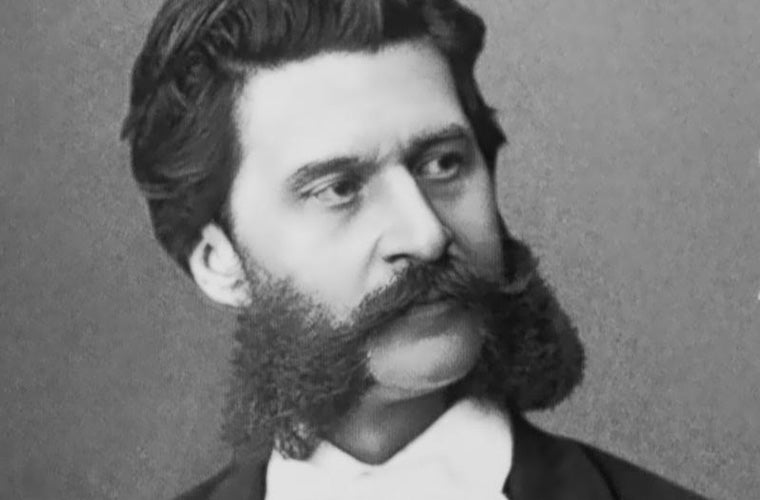
Johann Strauss, Jr.
1825 - 1899
Biography
Johann Strauss Jr., born in Vienna in 1825, is considered as one of the most gifted musical geniuses from the land of Austria. Having composed over 500 musical pieces, 150 of which were waltzes, he earned the nickname "The Waltz King." Besides waltzes, he had also worked on several polkas, marches, quadrilles, mazurkas, operettas, and ballet, before passing away in 1899.
The young Strauss Jr. started to show interest in music from his childhood, although his father (also a composer, Johann Strauss I) wanted his son to be a banker and deliberately discouraged him from such interests. Despite his father's opposition, he managed to get violin lessons with the help of his mother. Ironically, it was Franz Amon, his father's first violinist in the Strauss' orchestra, from whom Strauss Jr. started to take music lessons.
It was only when the father abandoned them for a mistress, that the young prodigy got a chance to concentrate on being a composer. He took lessons on counterpoint and harmony from Joachim Hoffmann and in 1844, he organized his first concert at Café Dommayer in Hietzing. In 1849, when his father died, Strauss Jr. merged his father’s orchestra with his own. Thereafter, he toured across Europe, England, and America, winning great popularity.
At the age of 28, he suffered a nervous breakdown due to overwork and stress and was prescribed rest for a while. This incident made his family persuade his brother Josef to take over the orchestra temporarily. In 1855, he was appointed to perform at the Vauxhall Pavilion at Pavlovsk the following year, by the Tsarskoye-Selo Railway Company of Saint Petersburg. In 1862, he married a singer, known as Henrietta Treffz.
In 1863, Jacques Offenbach, Paris' renowned composer of light operas, visited Vienna. Having met Offenbach, Strauss Jr. was inspired by his stage work and started writing operettas. As the official conductor of the court balls in Vienna, he composed exceptional waltzes such as On the Beautiful Blue Danube (1867), Artist's Life (1867), Tales from the Vienna Woods (1868), and Wine, Women, and Song (1869). He was the architect of taking the waltz from the underwhelming atmosphere of beer halls or restaurants to aristocratic ballrooms.
In course of time, Strauss Jr. realized his love for operettas and, as a result, he resigned as court conductor in 1870. In 1874, he produced one of his greatest masterpieces, an operetta known as Die Fledermaus. His other notable operettas include Indigo und die vierzig Räuber (1871), A Night in Venice (1883), from which the music for the Lagoon Waltz was derived, and ‘The Gypsy Baron (1885)’, from which springs the Treasure Waltz.
A great tragedy struck, when after sixteen years of marital life, his wife breathed her last. Sometime after this, Strauss Jr. got involved with Angelika Dittrich, an actress, whom he married in 1878. However, Dittrich didn’t have much interest in her husband’s musical career and left him for another man. Strauss Jr. divorced Angelika and married for the third time. The lady was Adele Deutsch, who encouraged him to compose brilliant musical pieces. Since it was mandatory for Strauss Jr. to convert to Lutheran Protestantism to marry Adele, he renounced the Roman Catholic Church and changed his nationality from Austrian to German.
Strauss continued to create a number of dance musical pieces, including the popular waltzes like Roses from the South (1880), Voices of Spring (1883) and many more. In his last years, Strauss still seemed quite energetic and productive. While working on a ballet, Aschenbrödel, he was diagnosed with a respiratory ailment, which developed into pleural pneumonia. This resulted in his death in 1899. The musical maestro won millions of hearts by showing them how to tinge musical verve with suavity through evergreen compositions.